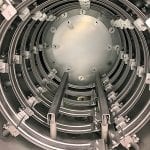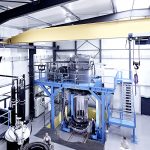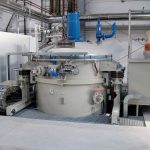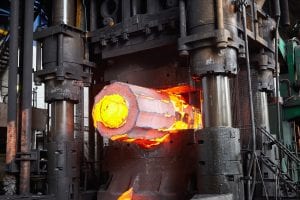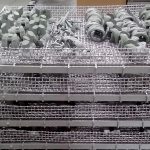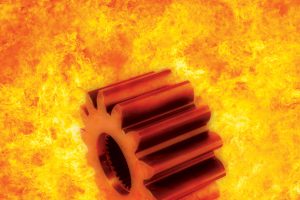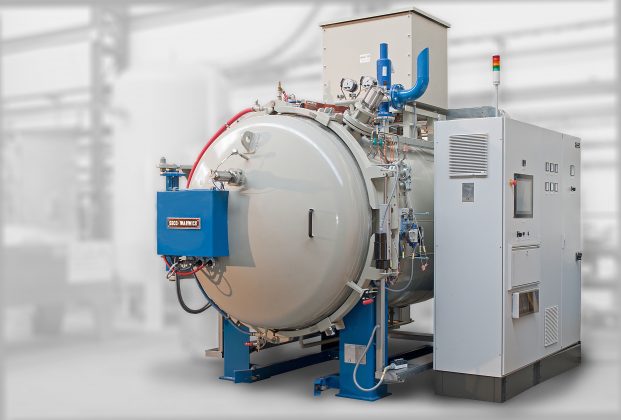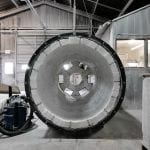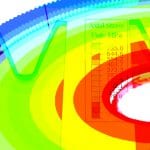Editor’s note » This is the final article of a five-part series that deconstructs the requirements of AC7102. Each article has appeared every other month through 2021. Part 1 was published in February; Part 2 appeared in April; Part 3 was featured in June; and Part 4 was part of the August issue.
AC7102/8 relates to pyrometry and is arguably the one checklist that contributes the most to the challenges suppliers face during a heat-treat audit. Pyrometry relates to the testing of thermal-processing equipment to ensure adequate uniformity and accuracy of sensor systems and instruments. These tests are in place to ensure hardware processed in thermal-processing equipment has satisfactory and consistent results. I will give two examples of the importance of pyrometry.
Example 1
Aluminum solution heat treating is dependent on the dissolution of Mg2Si. This process happens ideally 10-15°F below the eutectic temperature. If the temperature gets too close to the eutectic limit, something called incipient melting at the grain boundaries will occur, making the material scrap. Therefore, aluminum solution heat treating furnaces typically require a ±10°F (CL2) uniformity to maintain temperatures below the eutectic limit.
Example 2
Vacuum brazing is very common in aerospace. Consider a joint that requires a ±15°F uniformity. Five samples are placed on a ceramic plate: one in each corner and one in the middle. If the uniformity is not ±15°F, it is possible that the braze joints will not be uniform once joint testing occurs. This is especially important in diffusion brazing when re-melt in service is trying to be eliminated.
The Structure of AC7102/8
AC7102/8 has 8 sections, as shown below. In this article, we will visit areas of these sections that tend to challenge suppliers. We will also include the top-10 issues with AC7102/8 as published by PRI. These top-10 findings were published in 2019, so they applied to AC7102/8(NC)/AMS2750E, although they still have importance in this new version as well.
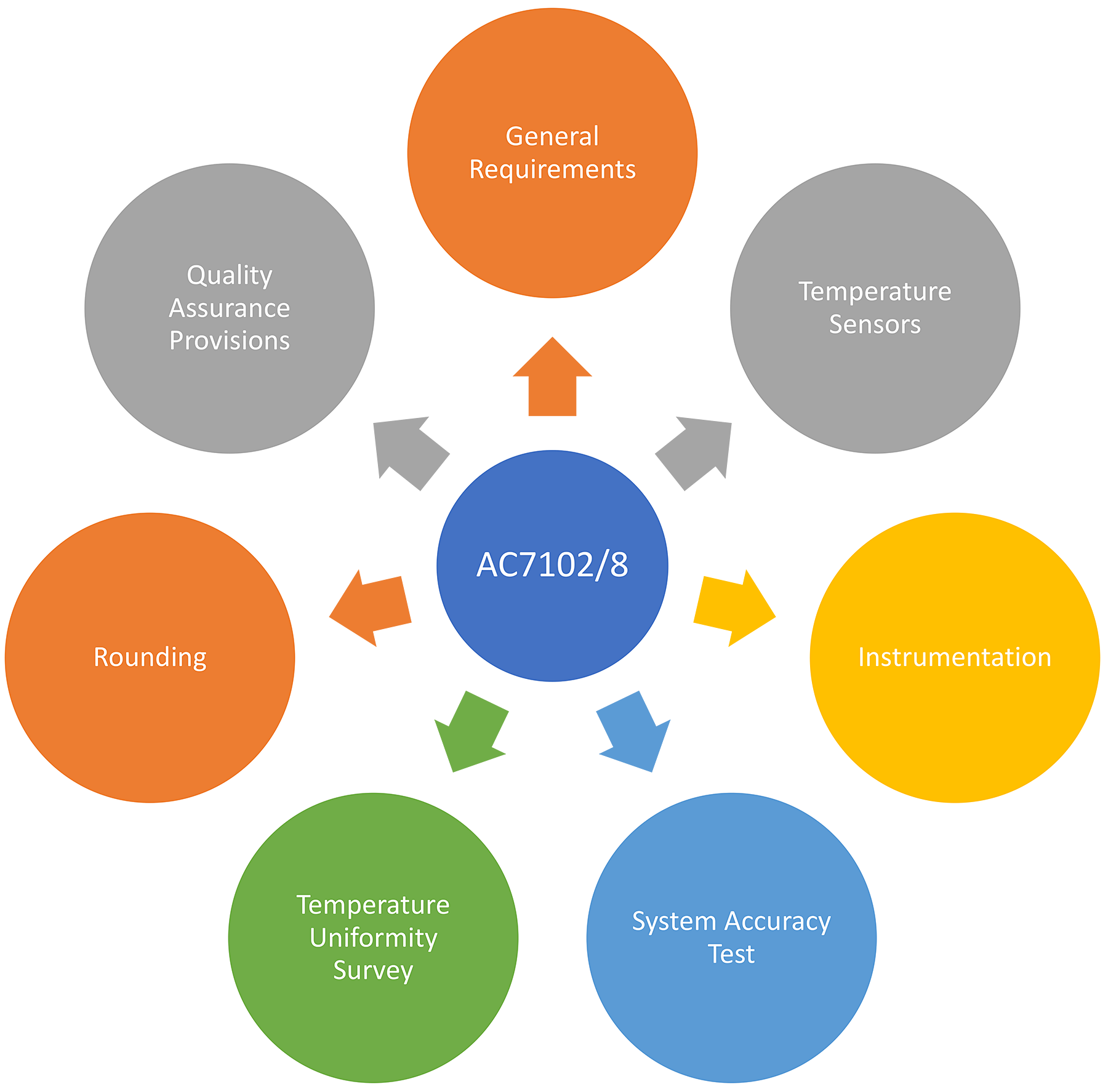 Section 1: General Requirements
Section 1: General Requirements
I would be remiss not to point out the major change in this section. Suppliers who use a third party to perform any aspect of pyrometry must ensure that service provider is 17025 accredited in the test they are performing. For example, if a supplier hires a service provider to perform temperature uniformity surveys and instrument calibrations, that service provider must have this stated on their 17025 accreditation and reference AMS2750.
Question 2.3 is #6 on the top-10 findings in pyrometry. This question relates to the review of tests and calibrations. This question should be considered for all aspects of pyrometry: from thermocouple certifications, SAT and TUS certifications, to instrument calibrations. Everything related to pyrometry must be included in the review process. Even if a third party is being used to perform testing, there must be a system in place to review the results to ensure conformance to AMS2750F.
Section 2: Temperature Sensors
A common issue I see when consulting relates to Question 3.3. As an example, a supplier may use a nonexpendable type N thermocouple as an SAT sensor (nonresident). This sensor may be inserted into different equipment to perform the SAT, including a quench tank. At times I see the type N SAT thermocouple calibration starting at 100°F, which would mean it is not calibrated in the range of the quench tank.
Question 3.7 seems to be a common challenge and has been for as long as I have been exposed to AMS2750 (since Revision C). This relates to the depth of insertion for Types E and K thermocouples used above 500°F. To start, this should be stated within suppliers’ internal procedures. Also, this must be controlled somehow at the furnace. I have seen several ways this is accomplished, usually by mechanical means. The requirement essentially states that, the portion of the thermocouple exposed to heat within the thermal-processing equipment must remain in that position and/or more of the thermocouple not previously exposed to heat may be inserted. The point is, portions of the thermocouple exposed to heat cannot be retracted from the work zone.
A frequent question I receive is how often suppliers need to replace their furnace thermocouples (i.e. control, overtemperature, etc.). With regards to AMS2750F, it is up to the supplier to come up with a replacement frequency and justify that frequency with SAT, TUS or instrument calibration data. Keep in mind, prime and industry specifications may over-ride this allowance and specify specific frequencies. Also, if the SAT waiver is implemented at a supplier, then there is a specific control thermocouple replacement frequency.
A new requirement is Question 3.14. It relates to how hot junctions are made. The hot junction is the point where the dissimilar wires touch to create the mV which converts to temperature. This can be made by either twisting or welding, or a combination of the two, as long as no filler metal is used.
Section 3: Instrumentation
The first major change in this section is that all process instruments must be digital after June 30, 2022. This would include process recording systems, controlling systems, and overtemperature controls. Also, recording systems must now have a readability to the 10th of a degree (0.1°F). So far, I haven’t seen this being a major issue for suppliers to conform to.
Question 4.2.3 requires that each thermocouple type and input/output being used be calibrated. I often see a type or input/output not calibrated when reviewing certifications. It is incumbent on suppliers to realize what thermocouple types must be calibrated and if they need both input and output for all types.
Questions 4.2.4 (test instruments) and 4.3.2.4 (furnace instruments) seems to cause some confusion at times. This question requires you calibrate each channel altered individually or as a group. An example of this is a Yokogawa DX model. The manual for this recorder states that, to calibrate, you insert into channel 2, and this will calibrate channels 1-10 (or 1-12, depending on the model) because they are on a single board. Other recorder manuals may state each channel needs to be calibrated individually. It is up to the supplier to read the manual and calibrate accordingly.
Calibration of each sensor system that qualifies the instrumentation type may seem straightforward, although at times I have noticed it is not for some suppliers. Question 4.3.2 describes this. Let’s look at an example of a type D instrumentation where a load thermocouple is used from time to time. In this case, it is not only what qualifies the instrumentation type, but what is also used as product acceptance, the load thermocouple. In this case, the load thermocouple system would need to be calibrated as well.
Question 4.3.3 has been modified to reflect a change in AMS2750F. Sensitivity is only required for analog instruments, not digital instruments.
Within the top-10 findings, the question regarding stickers and calibration records is No. 1. This is a broad statement as it is not specific regarding what precisely was missing, although we can still use this to our benefit. Questions 4.3.4 through 4.3.4.5 state what is required on the calibration sticker, with 4.3.4.1 being a new requirement to revision F. Question 4.3.5.1 through 4.3.5.19 state what is required on the instrument calibration certification. To ensure a supplier has all of the required information, it would be a good idea for suppliers to document these items within their internal procedures and include them within the quality verification.
Section 4 – System Accuracy Testing
Question 5.3.3 requires that SATs are performed the same way each time. In other words, once the initial SAT position and depth of insertion is established on the initial SAT, it must be repeated each subsequent time. The common issue I see in this situation is the specifics are not documented within suppliers’ internal procedure. This will potentially cause technicians/operators to set up the SAT test thermocouple in the incorrect location.
An additional frequent finding is Question 5.3.5. This question requires that SATs are performed on the sensor systems qualifying the equipment’s instrumentation type as well as addition systems used as product acceptance. An example of this may be a supplier designated the equipment as Type D although load thermocouples are used periodically when required and are part of product acceptance. This means the load thermocouple(s) used would require an SAT.
Question 5.3.5.3 requires additional systems used to justify the SAT interval extension must have an SAT performed. An example of this may be that two Type N thermocouples are installed — one attached to the control and one attached to the overtemperature device. Since the overtemperature device is being used to justify the SAT frequency extension, the over temperature would then require an SAT. At times, this required is overlooked when implementing the SAT interval extension.
Question 5.5 covers the alternate SAT requirements. This section was initially confusing for some suppliers as it may have been difficult to interpret the requirements of the alternate SAT. By now, most suppliers who must conform to this section are aware of what is required. The challenge may be with regards to the new requirements for documentation of the alternate SAT. If the alternate SAT is required, it is important to recognize the new documentation requirements and ensure the required documentation details are in place.
Section 5: Temperature Uniformity Surveys
The initial challenge suppliers may face with AMS2750F is the extended frequency. Tables 18 and 19 in AMS2750F have a slight wording change regarding the quantity of successful TUSs that must be achieved before moving the extended frequency. As an example, if a supplier is a CL2 Type D, TUSs must be performed monthly for four consecutive successful tests, then the supplier could extend it to bimonthly. When working to revision E, a supplier could count the initial survey as 1 of 4. With the slight rewording in revision F, this is no longer possible. The initial survey no longer counts toward the required consecutive successful TUSs. Through my recent consulting, I have noticed this to be an issue for those working to AMS2750F.
Another challenge I see when suppliers are working to AMS2750F relates to Question 6.1.5. This question requires vacuum furnaces using partial pressure must have one periodic TUS performed annually using partial pressure in the range used with one of the partial pressure gasses. While this is a new requirement to revision F, I am noticing this requirement being missed on recent audits.
Question 6.2.5 requires suppliers have a detailed diagram showing the location of the furnace and test thermocouples. I notice, from time to time, the diagram either within internal procedures or on the TUS certification do not show the location (or the correct location) of the control thermocouple. It is important to determine the location of the furnace thermocouples and identify them correctly on the TUS certification and any other location (i.e. procedures) a diagram may be located.
Summary
Pyrometry is arguably the most challenging part of a heat-treat audit. The most successful approach to understanding pyrometry is to receive continuous training and hands on practice to become familiar. There are many training programs available to suppliers. Using these tools will enable suppliers to successfully implement and maintain conformance to AMS2750F. This is the last in a series of articles covering select Nadcap checklists. I hope it has been helpful to readers.












